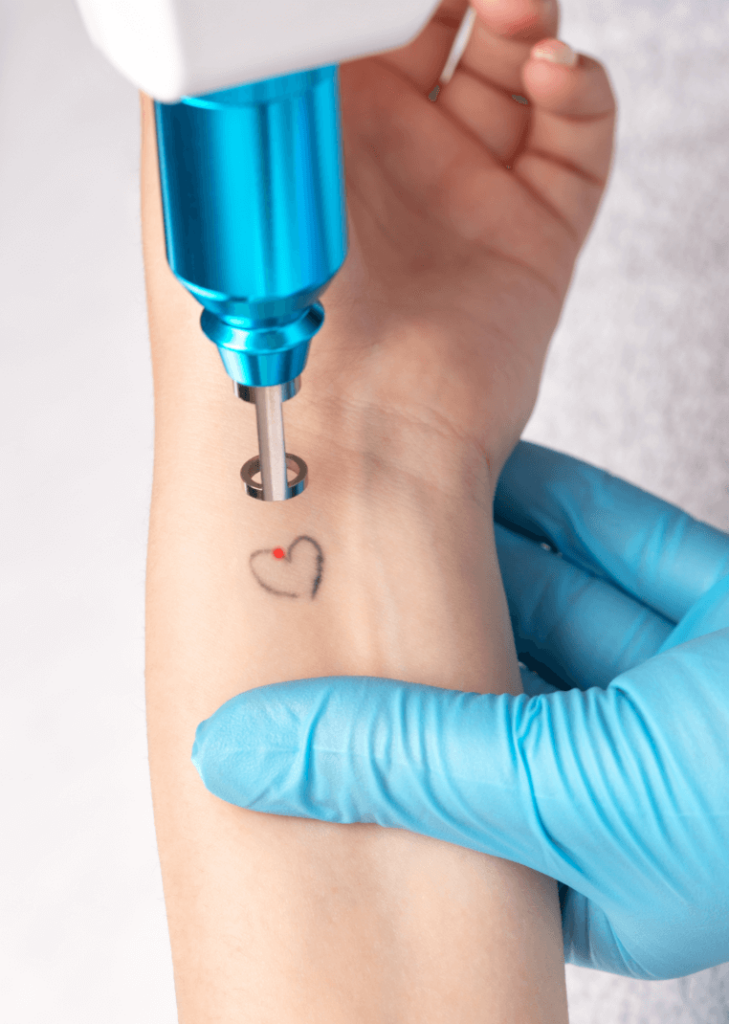
Introduction: The Growing Concern About Tattoo Safety
Tattoos have evolved from countercultural symbols to mainstream body art, with over 30% of UK adults now sporting at least one tattoo. However, as their popularity has surged, so have concerns about potential health risks—particularly whether tattoo ink could contribute to cancer development.
While definitive evidence linking tattoos to cancer remains elusive, emerging research reveals that tattoo pigments do not remain confined to the skin. Instead, they migrate through the body, accumulate in lymph nodes, and may trigger chronic inflammation—a known precursor to cellular damage and, potentially, malignancy.
This comprehensive guide examines:
✔ How tattoo ink travels through the body
✔ Carcinogenic ingredients found in tattoo pigments
✔ The role of chronic inflammation in cancer risk
✔ Current scientific limitations—and why we need more research
✔ How to minimise risks if you choose to get inked
The Journey of Tattoo Ink—From Skin to Lymph Nodes and Beyond
Why Doesn’t Tattoo Ink Stay Put?
When a tattoo needle deposits ink into the dermis (the skin’s middle layer), the body recognises these foreign particles as invaders. The immune system responds in two key ways:
- Macrophage Engulfment
- Specialised immune cells (macrophages) attempt to “eat” and break down ink particles.
- However, many pigments are too chemically stable to degrade fully.
- Lymphatic Transport
- Undigested ink particles drain into the lymphatic system, where they accumulate in lymph nodes.
- Studies using synchrotron X-ray fluorescence have found titanium, chromium, and nickel in the lymph nodes of tattooed individuals—sometimes decades after getting inked.
Systemic Spread: Can Ink Reach Other Organs?
While most research focuses on lymph nodes, some evidence suggests ink may circulate further:
- A 2021 German study detected tattoo pigments in liver and spleen samples.
- Heavy metals like cadmium and lead (found in some inks) are known to bioaccumulate in organs over time.
Key Takeaway: Tattoo ink is not inert—it moves through the body, though the long-term health implications remain unclear.
Toxic Ingredients in Tattoo Ink—What’s Really Under Your Skin?
The Unregulated World of Tattoo Pigments
Unlike cosmetics or pharmaceuticals, tattoo inks are not strictly regulated in many countries, including the UK. This means they can contain:
|
Ingredient |
Common Colors |
Known Risks |
|
Azo dyes |
Reds, Oranges, Purples |
Can degrade into carcinogenic aromatic amines (PAAs) under UV light |
|
Cadmium sulfide |
Yellows |
Group 1 carcinogen (IARC) – linked to lung cancer |
|
Carbon black |
Blacks |
Contains polycyclic aromatic hydrocarbons (PAHs), some carcinogenic |
|
Titanium dioxide |
Whites, Pastels |
Potential genotoxicity in nanoparticle form |
|
Mercury sulfide |
Reds |
Neurotoxic; banned in EU but still found in some inks |
The Photodegradation Problem
Exposure to sunlight or laser removal can break down tattoo pigments into smaller, more reactive molecules. For example:
- Red azo dyes → May split into o-anisidine (a probable human carcinogen).
- Titanium dioxide → Can generate free radicals when exposed to UV light.
Did You Know? The EU’s 2022 tattoo ink ban outlawed ~4,000 hazardous chemicals—but enforcement remains patchy.
Chronic Inflammation, Immune Response, and Cancer Risk
The Inflammation-Cancer Connection
When foreign particles (like tattoo ink) linger in tissues, they can cause low-grade chronic inflammation, which:
✔ Damages DNA via oxidative stress
✔ Promotes cell proliferation (a hallmark of cancer)
✔ Impairs immune surveillance of abnormal cells
However:
- No direct epidemiological link between tattoos and cancer has been proven.
- Individual susceptibility varies—genetics, pre-existing conditions, and tattoo size/location all play roles.
Case Studies & Research Gaps
- Lymphoma Concerns: A handful of case reports describe lymphomas near tattoos, but causation is unproven.
- Melanoma Confusion: Tattoos can obscure skin cancers, delaying diagnosis.
- Long-Term Data Missing: Most studies track ink migration, not cancer outcomes over decades.
Expert Quote:
“The dose makes the poison. A single tattoo may pose negligible risk, but we lack data on cumulative exposure in heavily tattooed individuals.”
— Dr. Maria Schröder, European Society of Tattoo Pigment Research

Minimising Risks—A Practical Guide for Tattoo Enthusiasts
Before Getting Inked
- Research Studios & Artists
- Choose licensed professionals who use single-use needles and autoclaved equipment.
- Ask for ink safety data sheets (reputable brands provide these).
- Select Safer Pigments
- Avoid reds, yellows, and greens (higher metal content).
- Opt for black carbon-based inks (fewer additives).
- Patch Test
- Request a small test tattoo to check for allergic reactions.
Aftercare & Monitoring
- Watch for:
- Persistent swelling/redness
- Lumps near tattooed areas (could indicate granulomas or lymph node changes)
- Sun Protection:
- UV accelerates ink degradation—use SPF 50+ on tattoos.
Laser Removal Considerations
- Breaking ink into nanoparticles may increase systemic absorption.
- Consult a dermatologist about potential heavy metal mobilisation.

The Future of Tattoo Safety—Regulation & Research Needs
Policy Changes
- Stricter EU/US ink regulations (e.g., REACH compliance).
- Mandatory ingredient labelling for tattoo studios.
Emerging Solutions
- “Biodegradable inks” are designed to break down safely.
- MRI-compatible pigments for medical imaging clarity.
Critical Research Questions
- Do tattooed individuals have higher heavy metal loads in organs?
- Does chronic ink exposure alter immune function long-term?
- Are certain populations (e.g., immunocompromised) at greater risk?
Conclusion: Balancing Art & Health in the Tattoo Era
While tattoos remain a powerful form of self-expression, their long-term health effects are still being uncovered. Current evidence suggests:
✔ Ink migrates beyond skin to lymph nodes and possibly organs.
✔ Some pigments contain carcinogens, but risk depends on dose and individual factors.
✔ Chronic inflammation is plausible, but cancer links remain theoretical.
Your Next Steps:
- Consult a dermatologist if you have concerns about existing tattoos.
- Advocate for safer inks by supporting regulated studios.
- Stay informed as new research emerges.
For expert skin health advice, visit:
🔗 www.skincarenetwork.co.uk
